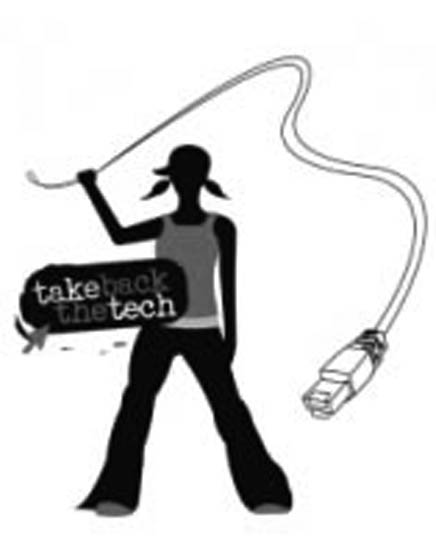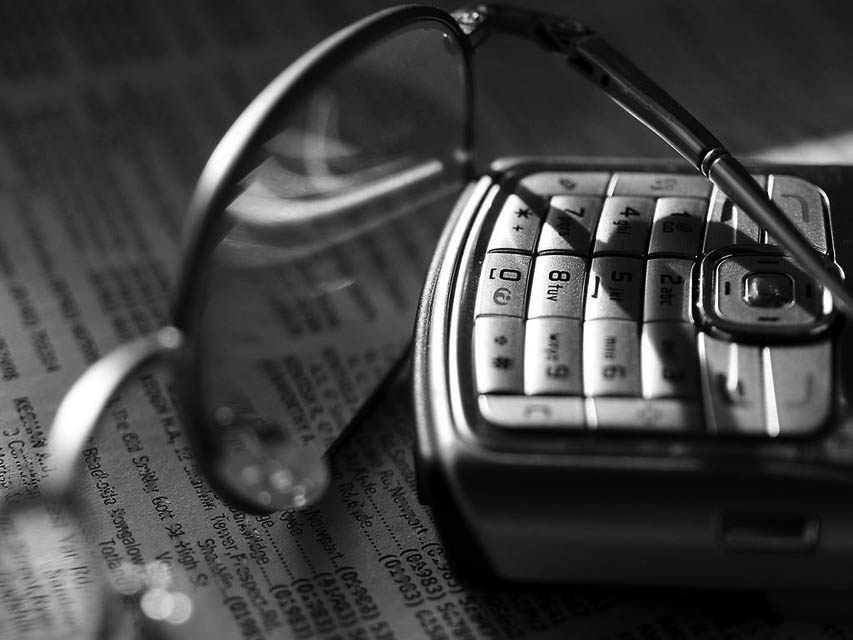
Violence Against Women (VAW) in the Digital World: Emerging Issues, Challenges and Opportunities
VAW and ICTs in the Philippines
Violence against women in the Philippines is considered a public crime. Because it happens both in the private and public sphere of women’s lives, it is recognised to be a crime against humanity and not merely a crime against a person. Though the number of reported cases to the Philippine National Police (PNP) differs from number of cases served by the Department of Social Welfare and Development (DSWD), figures in both agencies have increased by more than 30%1 from 2008 to 2009. Law enforcers and service providers are receiving complaints of domestic violence, rape, sexual harassment, prostitution and trafficking on a daily basis despite existing efforts and various strategies employed to raise public awareness and educate communities about VAW, its realities, and how they can be addressed. Moreover, as we move into the information age, new spaces are created for people to explore, thus creating new avenues for violence.
Developments in new information and communications technology have introduced new ways of dealing with our public and private lives. Individuals have found different means of communicating, expressing their opinion, and sharing and accessing information in a borderless world. This has brought about faster and more efficient exchanges between people and communities around the world.
Because of this, women are becoming more and more visible online. The internet provides them space for self expression, education, communication and networking while mobile phones have become an extension of their personal lives - providing speedy communication and convenient storage of personal and important messages or information.
All these spaces made available in the digital world are also becoming potential spaces for violence against women to occur. Cases, both reported and unreported, are slowly emerging and law enforcers are facing new challenges in appreciating and responding to these new forms of VAW in the Philippines. This article outlines some of these emergent forms of VAW in the digital sphere, in the hope of raising awareness nd engendering appropriate responses from all stakeholders.
Emerging Forms of E(electronic)VAW
The Foundation for Media Alternatives (FMA) in the Philippines conducted a series of round table and focus group discussions with various stakeholders composed of non-governmental organisations working on ICTs and issues related to violence against women and children; government agencies; as well as some sectoral groups representing youth, LGBTs and educators, entitled “E(electronic) VAW: Gender, Technology & Public Policy.” This initiative is part of a global project called “Take Back the Tech! To End Violence Against Women,” involving twelve-countries in South Africa, Latin America and Asia. The initiative was sponsored by the Association for Progressive Communication’s Women’s Networking Support Programme. The following were the different forms of EVAW identified during these discussions:
Take Back the Tech! To End Violence Against Women
Take Back the Tech! To End Violence Against Women is a global initiative that aims to provide safe spaces for women and girls online and offline. It identifies and employs strategic initiatives to address and respond to challenges brought by ICTs to women and address VAW.  Take Back the Tech! To End Violence Against Women establishes venues to discuss the intersections of VAW and ICTs and hopes to develop a reference paper and an action agenda that will highlight specific steps to take to address eVAW. It also provides capacity building sessions and develops ICT skills of women through Feminist Technology Exchange. Additionally, its Small Grants Program aims to provide initial funding for innovative and strategic ideas utilising ICTs to combat VAW and eVAW.
Take Back the Tech! To End Violence Against Women establishes venues to discuss the intersections of VAW and ICTs and hopes to develop a reference paper and an action agenda that will highlight specific steps to take to address eVAW. It also provides capacity building sessions and develops ICT skills of women through Feminist Technology Exchange. Additionally, its Small Grants Program aims to provide initial funding for innovative and strategic ideas utilising ICTs to combat VAW and eVAW.
For information about activities and plans in the Philippines, contact the author at This email address is being protected from spambots. You need JavaScript enabled to view it.
Unauthorised recording, reproduction and distribution of videos and images
Cases of unauthorised recording, reproduction and distribution of videos and images are increasingly disturbing. Sex videos and compromising images of couples proliferate online and offline for various purposes. Many popular personalities are victims but even private individuals are not spared from these malicious and unacceptable practices that often target and affect women from different walks of life.
New tools and gadgets allow clandestine, fast, hassle-free, and inexpensive sharing of these recorded acts (authorised or not) for different reasons, such as harassment, to humiliate and scandalise particular women (or men), or for commercial purposes (i.e., the lucrative trade in sex videos). Because of these, women’s privacy is often violated and exploited by perpetrators and viewers alike.
Cyber/Mobile Harassment
The following is a typical story that can be found in today’s news: a relationship goes bad, and the couple breaks up; however, this is not where it ends as the woman’s ex-boyfriend uploads their intimate photos or videos on Facebook to take revenge and humiliate the woman for leaving him. Similar issues abound with women being threatened that intimate and compromising images of them will be uploaded, shared over the office network, or circulated through mobile phones; or a woman forced to do things she does not want, or a woman being publicly humiliated. In the same way, lesbians, gays bisexuals and transgenders often face homophobic attacks from individuals ridiculing and shaming them in various spaces online.
Moreover, lewd, threatening messages and pornographic images can be sent instantly to a woman to continuously harass her. In the Philippines, students are beginning to report such incidents to the Office of Anti-Sexual Harassment at the University of the Philippines. The unwelcome and unsolicited nature of such messages constitutes cyber sexual harassment. Sexual harassment, as it is defined in the law and the University’s policy, is any unwelcome sexual advances, requests for sexual favours, and other verbal or physical conduct of a sexual nature that tends to create a hostile or offensive environment for a person. Such advances or acts committed through mobile phones, emails, or the internet can be considered cyber sexual harassment.
Emails or SMS (short message service, known more commonly in the Philippines as text) messages containing threats, warnings, and offensive language to humiliate and cast fear in women make up new forms of emotional abuse and result in psychological trauma. Atty. Claire Luczon, Director of WomenLEAD, an organisation providing legal services to women in the Philippines, emphasises that even lawyers and other service providers are not spared from receiving such messages from perpetrators. This affects the woman’s composure and resolve to continue with the case and seek justice. With this, technologies become powerful tools to convey damaging and destructive messages to women from their intimate partners and even strangers who want to exert power and control over the victim and to those who provide assistance and support to them.
Cyber Stalking
If in the past, stalking would require physically following a woman to see what she does and where she goes, new technologies have made stalking easier and more prevalent. Location racking is now a basic feature in mobile phone technologies, and many telecommunication companies go as far as providing location tracking as a service. Access to this kind of information – the actual location of any individual at any given time – therefore becomes a highly contested issue between users and service providers. Where and how does one draw the line between freedom and privacy?
 This reality puts women in a more complex and precarious situation. For instance, a woman who is hiding from her partner after having escaped an abusive relationship may easily be found with the use of this technology. Additionally, confidential information given by a victim reporting an incident of abuse or seeking immediate help may be compromised because perpetrators can easily access mobile phones (SMS and voice) and internet logs (e.g. email). Moreover, the information found in these logs may likewise be used to blackmail victims and give grounds to file counter charges.
This reality puts women in a more complex and precarious situation. For instance, a woman who is hiding from her partner after having escaped an abusive relationship may easily be found with the use of this technology. Additionally, confidential information given by a victim reporting an incident of abuse or seeking immediate help may be compromised because perpetrators can easily access mobile phones (SMS and voice) and internet logs (e.g. email). Moreover, the information found in these logs may likewise be used to blackmail victims and give grounds to file counter charges.
Cyber Prostitution and Trafficking
Though there are differing views and positions about prostitution and sexwork, developments in ICTs have paved the way to bigger, wider, cross border and syndicated prostitution and trafficking operations in the Philippines. Several news reports have exposed so-called “cybersex-dens” where organised cybersex trade is run by syndicated criminals. However, while this is true, there are also stories of individuals (mostly women and transgender people) who work “freelance” and do it in the comfort and safety of their own homes.
Accessible and cheap internet shops, affordable wireless connectivity, and the ubiquity of webcams and internet enable mobile devices to become the basic tools of this trade- proliferating in many different communities. The Philippine Coalition Against Child Trafficking relays alarming reports of a growing number of children frequenting internet shops “well-dressed” and suddenly able to afford expensive treats and gadgets. The National Bureau of Investigation recently raided a compound in Taguig City where trafficked women and children were locked in houses. Inside, women were forced to engage in cybersex, while children as young as 10 were taught how to model in front of webcams. In Cebu City in Central Philippines, stories abound of children brought to shops by elder siblings or even parents to pose/model while they engage in chat sessions, usually of a sexual nature, for money. In Davao City in Southern Philippines young professionals who have day jobs admit to doing “night shifts” in a nearby internet cafe. Many who engage in these forms of “sexwork” even use mobile phones and payments are made through mobile remittance/cash transfer or even pasa load2.
The Philippines has long been grappling with the problem of prostitution and trafficking; however, with new technologies, operations have become more widespread and much more effective.
Online Pornography
Pornography is the most prevalent form of films and even live acts are made available through various media. Women, mostly minors, are the usual “come ons” for readers, viewers and website visitors. With new ICTs, the increasing numbers on pornographic materials featuring women and children in sexually explicit and degrading acts is troubling. With these new technologies, pornographic images are mass produced and easily distributed beyond borders.
ICT mediated VAW
Apart from VAW perpetrated by internet and mobile phone technology, there are VAW cases that use ICTs to facilitate commission of real life crimes. According to the police, solving such cases becomes more difficult because suspects usually use aliases and use different identities. Examples of these crimes are:
Rape and Sexual Assault by Text or Chatmates
As more and more Filipinos use SMS to communicate and connect with each other, it has also fast become a channel for self and, alarmingly, sexual expression. In some cases, these sexual expressions and explorations lead to violence and abuse. The Philippine National Police confirm reports of instances of rape committed by chat or text mates.
In Cebu and Davao, authorities have suspended airing of a radio program promoting on air SMS exchange to match individuals looking for partners. It was believed to have facilitated sexual assault cases in Davao and the death of a woman in Cebu who tried to resist rape by the so called textmate she met through the radio program. With available technology, such programmes become convenient avenues for criminals to meet and identify unsuspecting victims.
Online Gaming
Another area of concern that needs to be explored is the evolving culture of online gaming among the youth. Several online games feature very disturbing concepts about women. In strip poker, a player wins if he is able to completely undress the woman. This is one of many such games. For example, Grand Theft Auto is a video game that allows a player to earn additional points for raping or killing a prostitute. Many other games feature highly sexualised images of women, such as enlarged breasts and hips, thin waistlines, long curled lashes and pouting lips that convey stereotypical representations of women as sex objects.
This may not have direct bearing to real women, but what becomes of the player constantly exposed to these ideas and these forms of violence? This is something that may warrant further social and psychological studies that examine this phenomenon.
Gaps and challenges
Admittedly, developments in ICTs pose several gaps and challenges that require thorough examination by different stakeholders involved in addressing VAW.
There are awareness gaps among women ICT users and advocates about emerging forms that should be included and incorporated in various advocacy efforts and public information about VAW. Law enforcers, lawyers and judges encounter challenges in applying available laws to these new forms of violence and have limitations in recognising different electronic evidence to prove violation or commission of the crime. The need to review laws on VAW vis-a-vis these new forms of violence against women is evident to ensure that it is responsive to the new characteristics of crimes introduced by ICTs.
Indeed, challenges posed by these new technologies are tricky to address. The relative anonymity of users online allows criminals and perpetrators to walk away freely since the evidence to establish and prove the real and valid identification of perpetrators is crucial to a conviction. However, the retrieval of surveillance and data information from service providers to establish the identity of the criminal becomes a contentious point due gray areas of individual’s privacy rights enshrined in our the Philippine Constitution.
Opportunities
If developments in the ICTs introduce dangers and risks to women’s online security, privacy and safety, there are also ways in which it can protect and empower women as well as promote safe spaces online and offline. Various government and women’s NGOs have implemented online reporting of cases, providing counselling and referral services to different agencies. The use of SMS hotlines for help are employed by law enforcers, allowing them to immediately and effectively respond to cases.
Social networking sites are used and websites are developed to provide public information and raise awareness about VAW as well as to promote women’s rights. The internet and mobile phones connect women victims, survivors and service providers in the Philippines and around the world to offer mutual support and assistance. Online training and capacity building sessions are also made available to ensure women’s critical and strategic use of technology.
Endnotes:
1 http://www.nscb.gov.ph/factsheet/pdf10/Women_Men_March2010.pdf
2 A form of payment constituting load credits for the mobile phone use.
3 Umali, Violeda. The Cyber Trafficking of Filipino Girl-children: Weaknesses of Philippine Policies. Asian Women 2005. Vol 20. Pp 175-206





 The
The 
 Isis Resource Center holds one of the largest feminist collections of materials in the Global South. With 40 years of publication experience, Isis holds a vast collection.
Isis Resource Center holds one of the largest feminist collections of materials in the Global South. With 40 years of publication experience, Isis holds a vast collection.